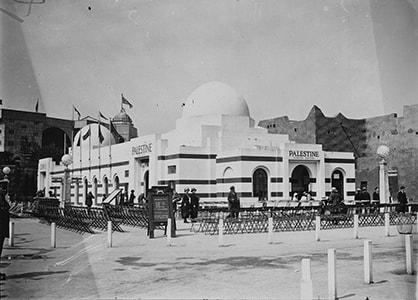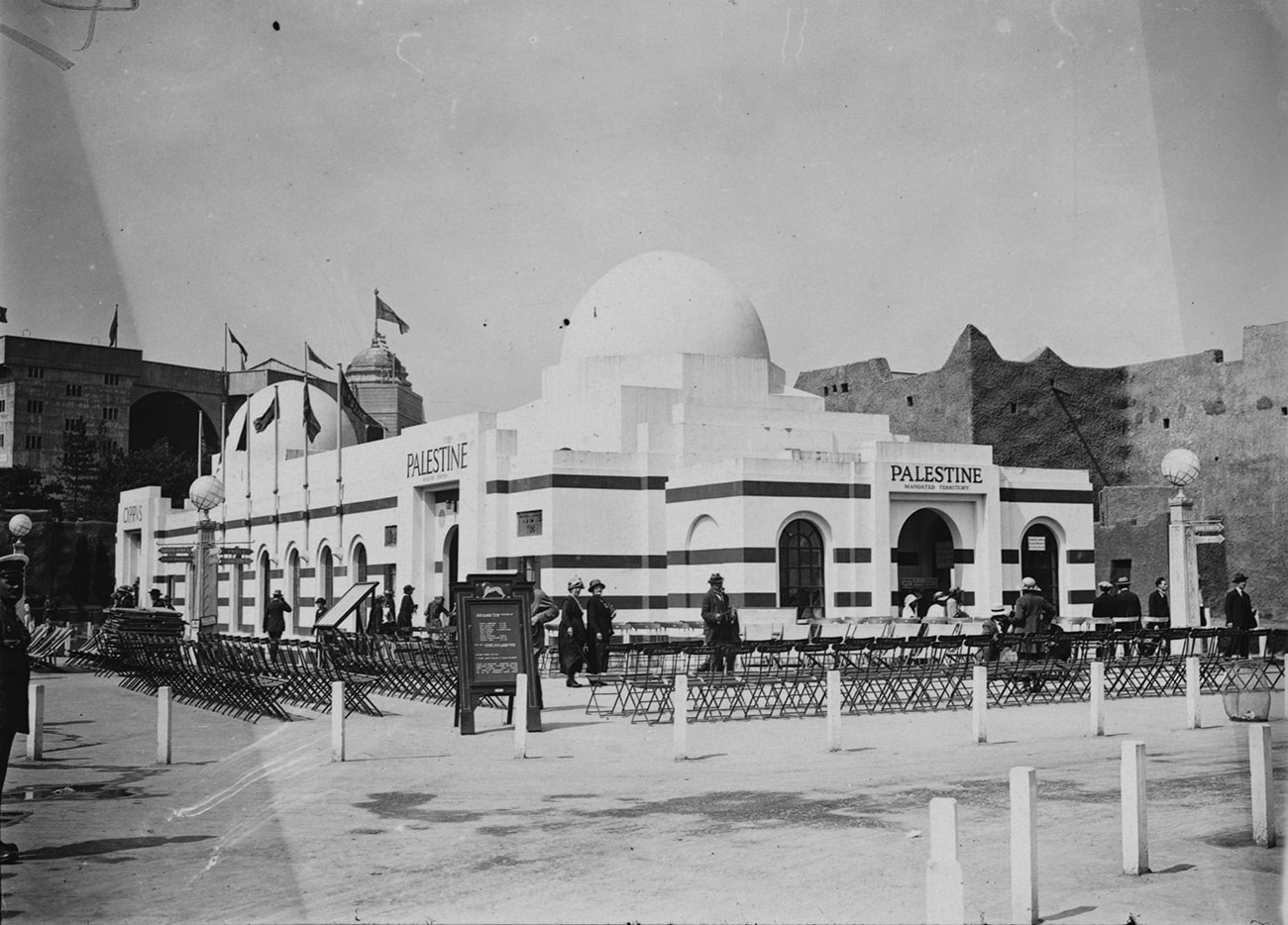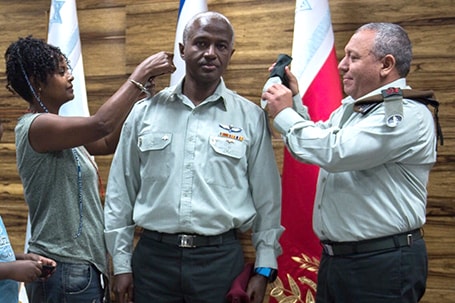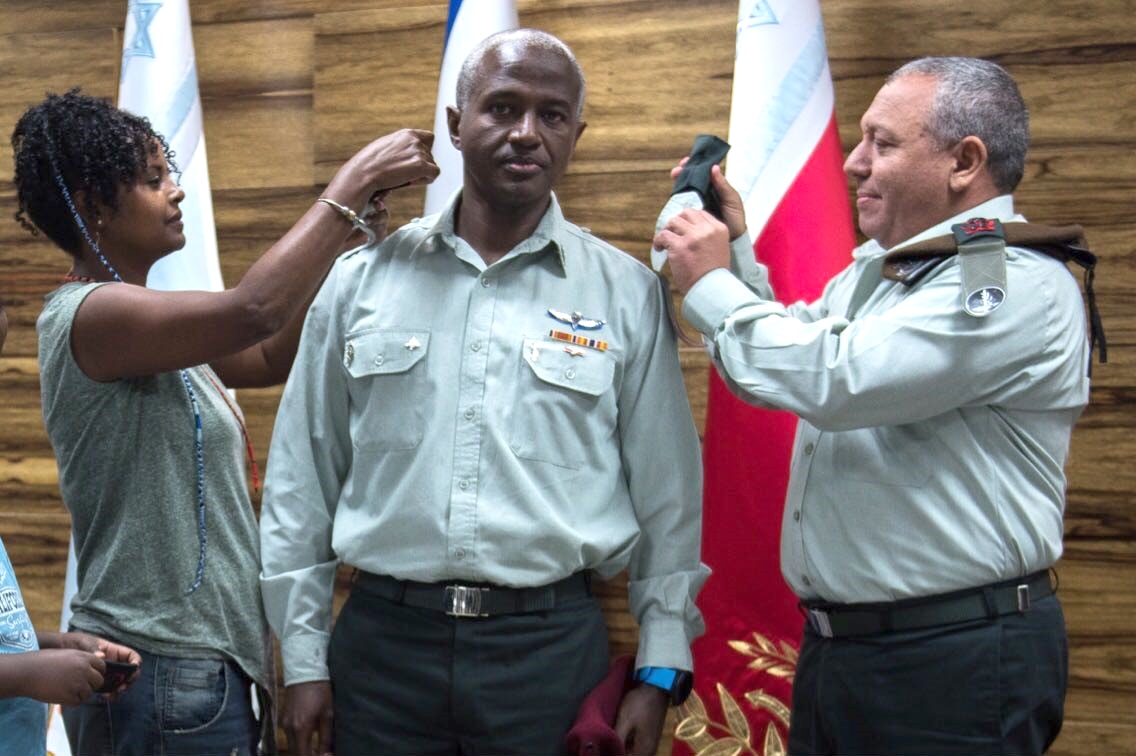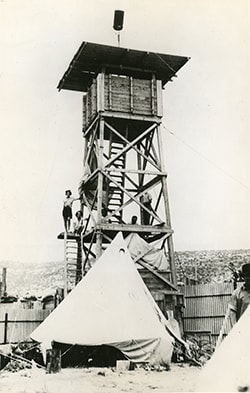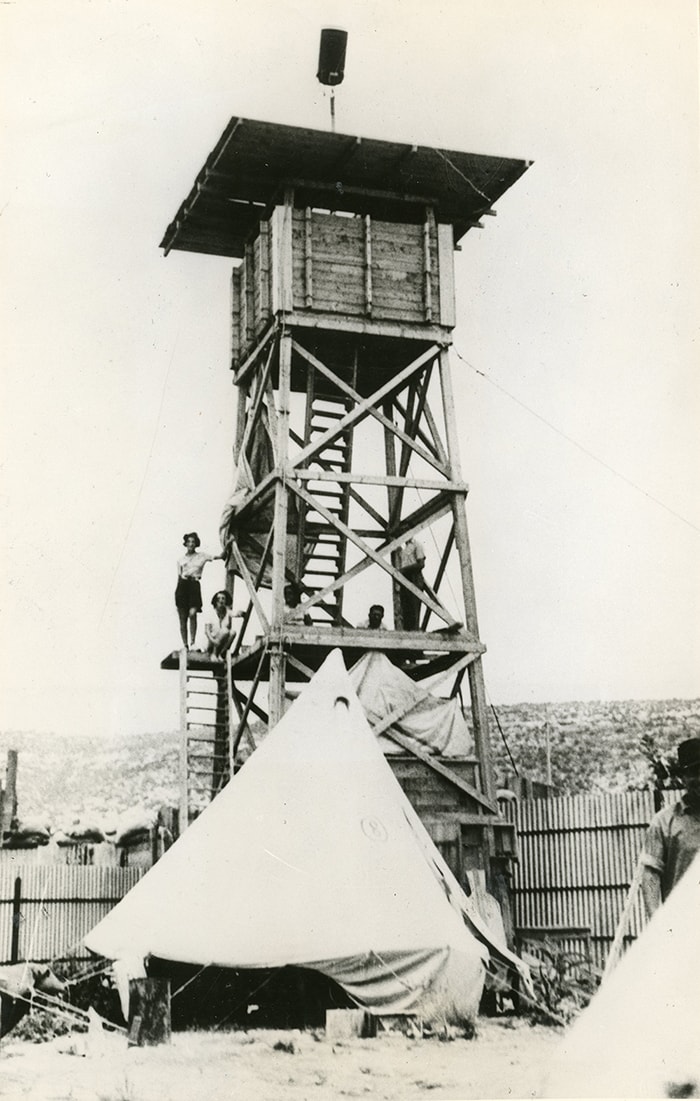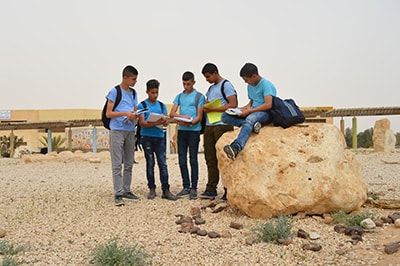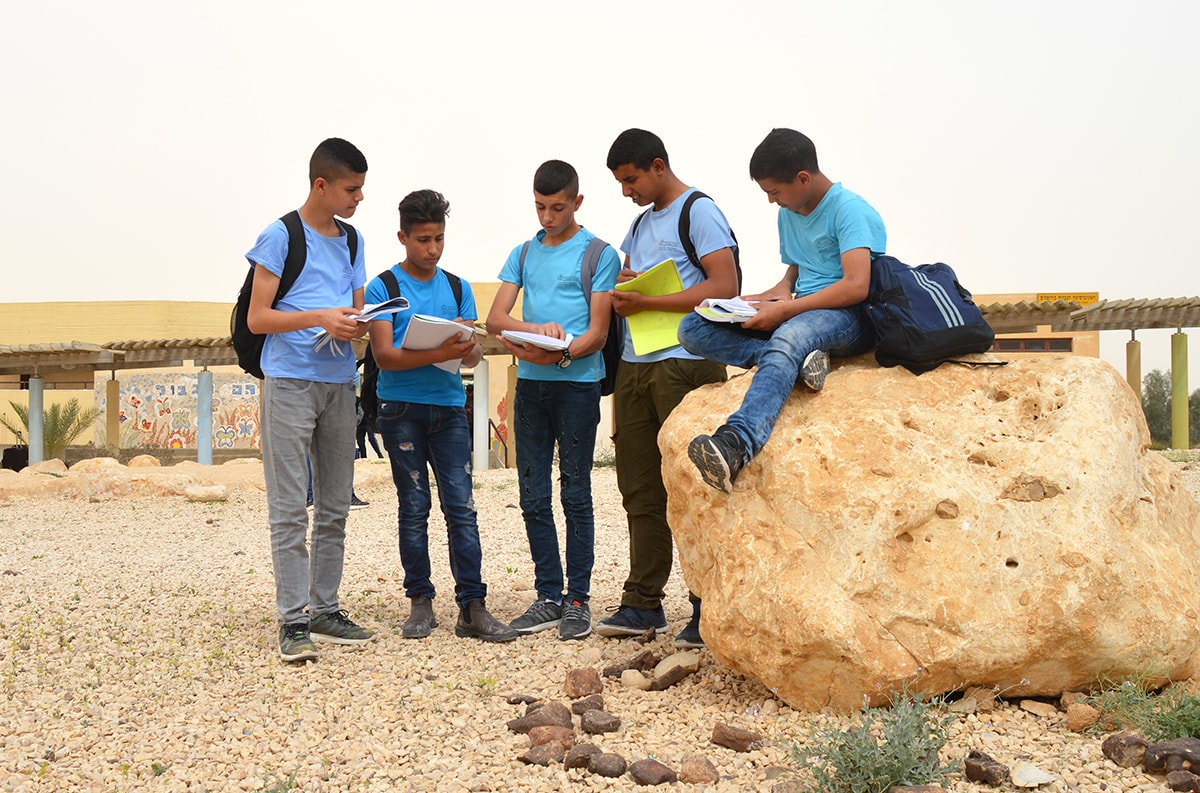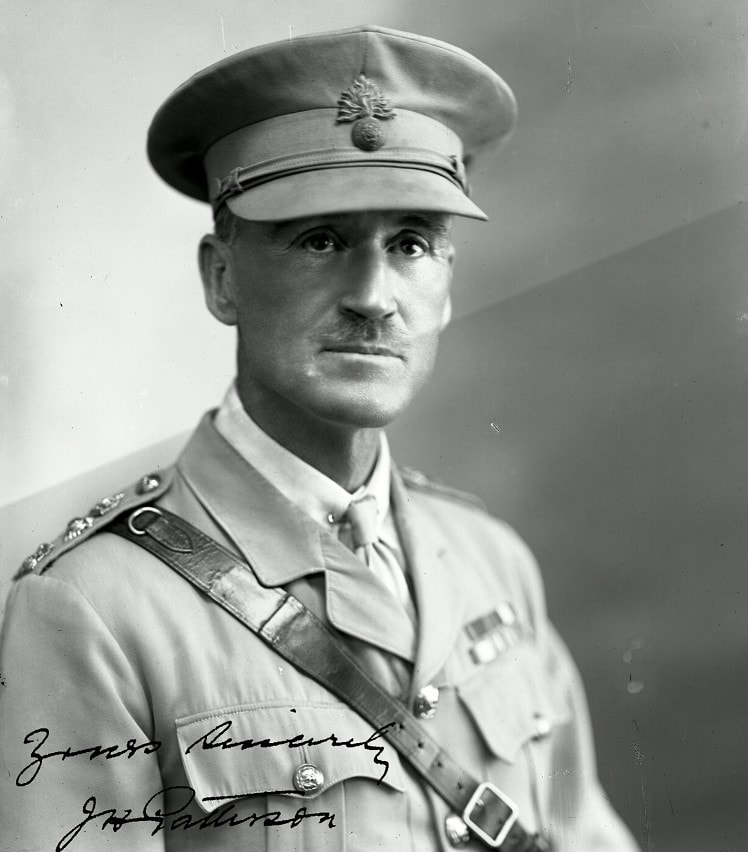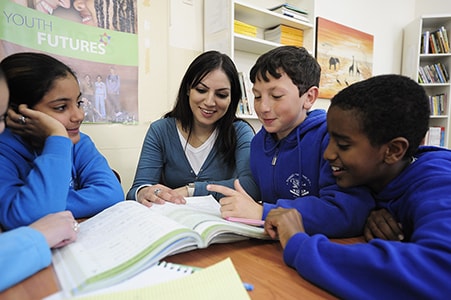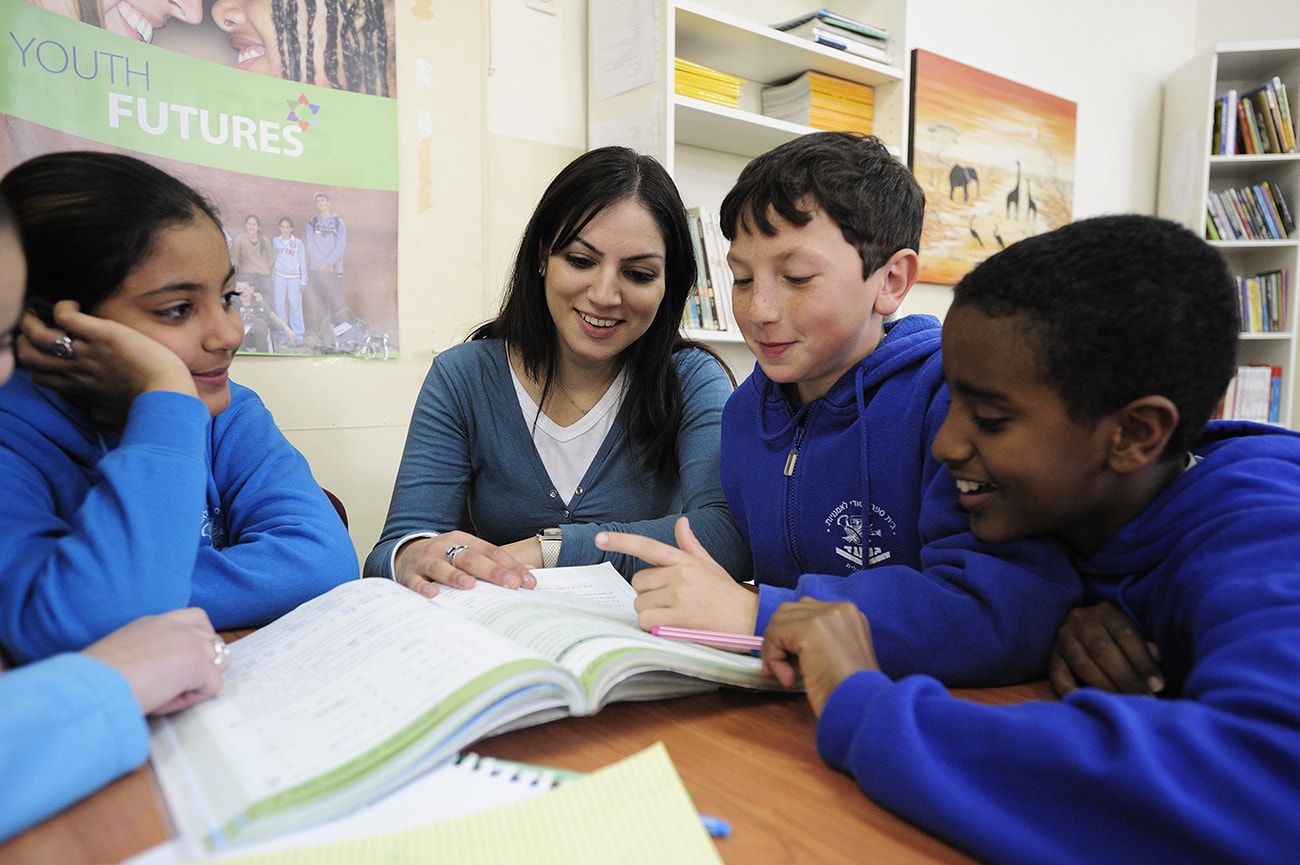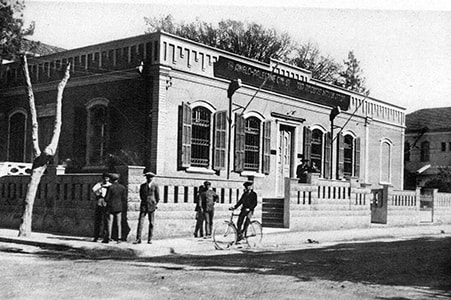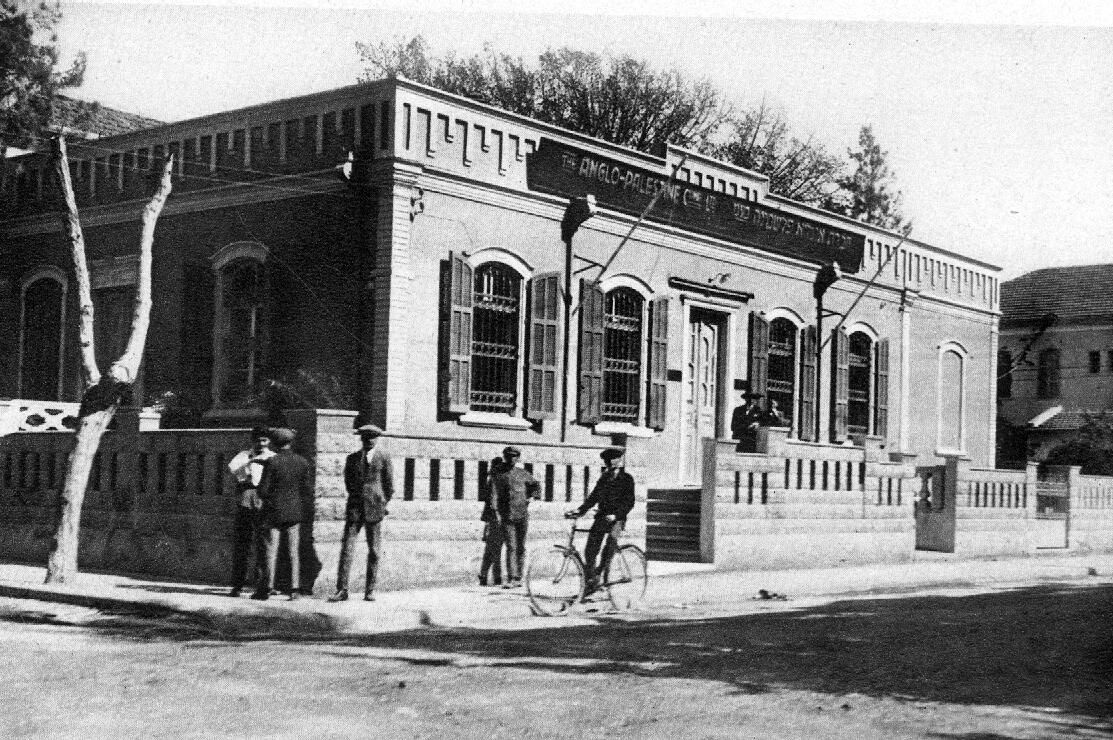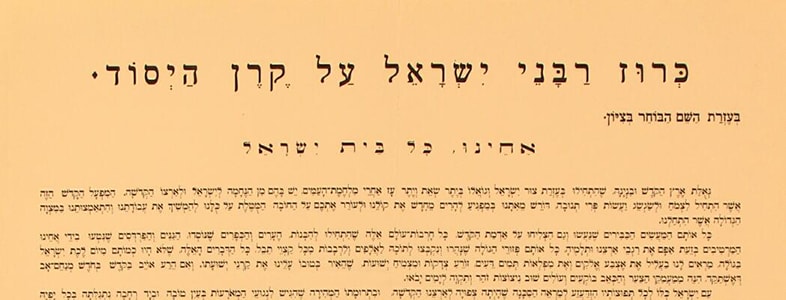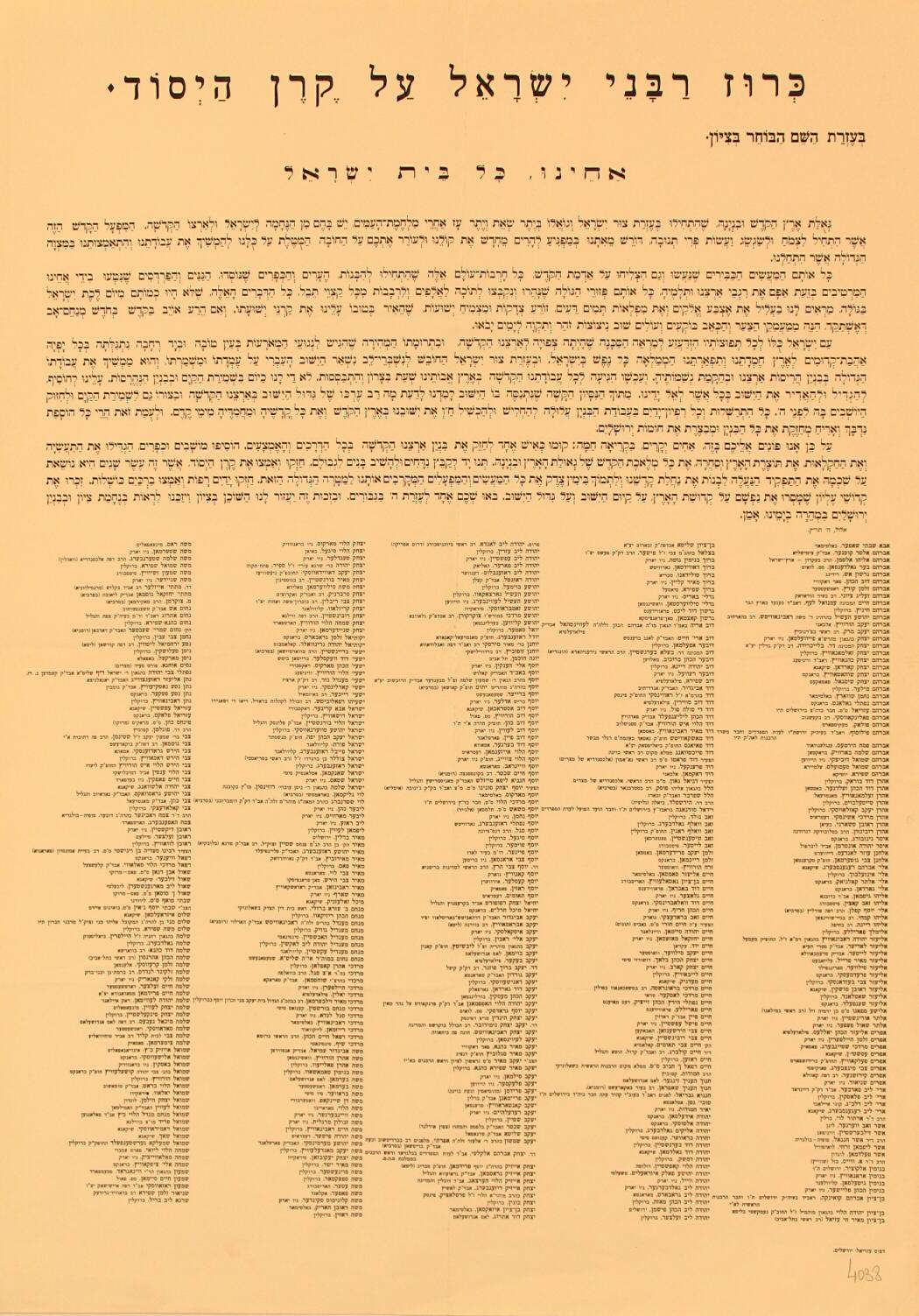Over 20 Jewish settlements were established within a few years in the 1920s at the foot of the breathtaking hills of the Jezreel Valley, under the burning sun, on agricultural land that was almost impossible to cultivate and in disease- and mosquito[1]ridden swamps amidst dozens of Arab villages. When Keren Hayesod was founded, it was clear that resources needed to be invested in strengthening agricultural settlements. Despite the inadequate water systems and difficult living conditions, the Jezreel Valley pioneers succeeded in casting roots in the area with the support of Keren Hayesod. 23 settlements were subsequently established in the Hefer Valley and in other locations throughout the Land of Israel. Between 1932 and 1939, the number of kibbutzim and moshavim increased from 37 to 134. By 1960, Keren Hayesod had helped set up some 900 settlements, proving that it is indeed possible to make the desert bloom.
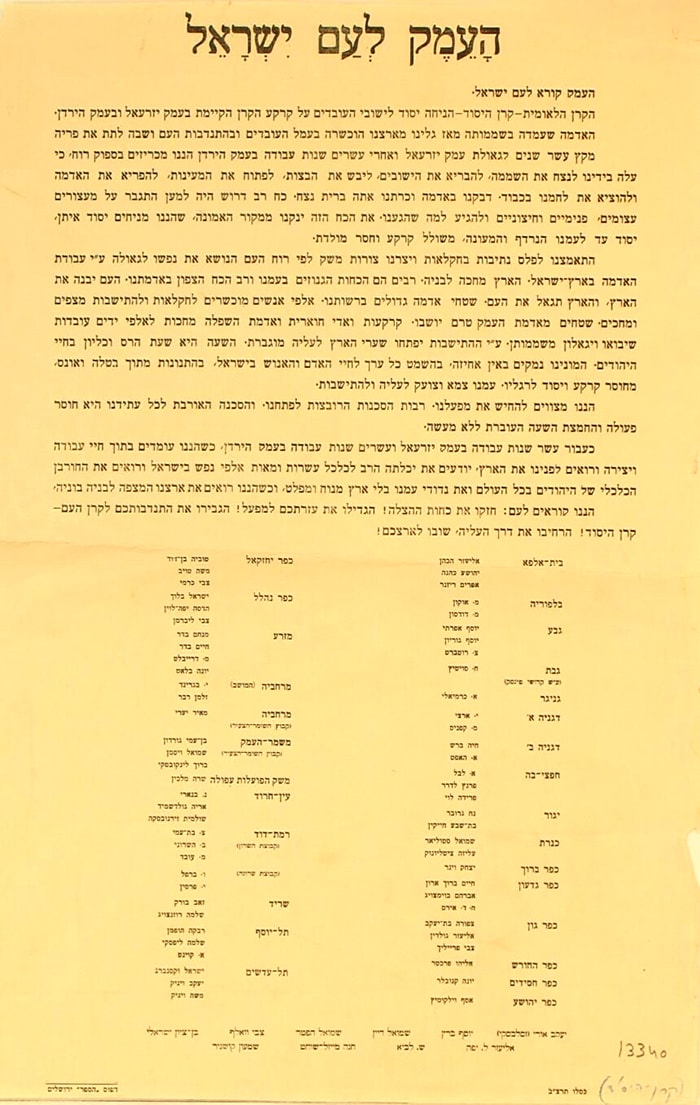
Photo: Call to the people of Israel to strengthen the rescue forces, broaden assistance to the settlement enterprise, and increase volunteer work with Keren Hayesod. 1932, Jezreel Valley
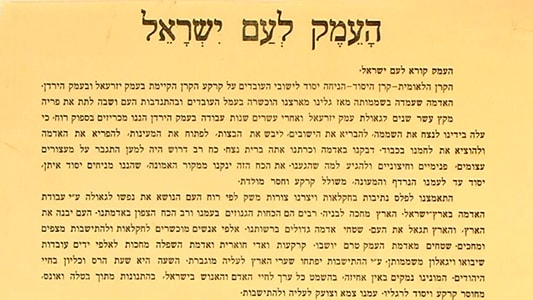
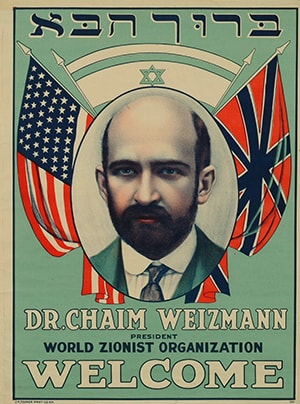
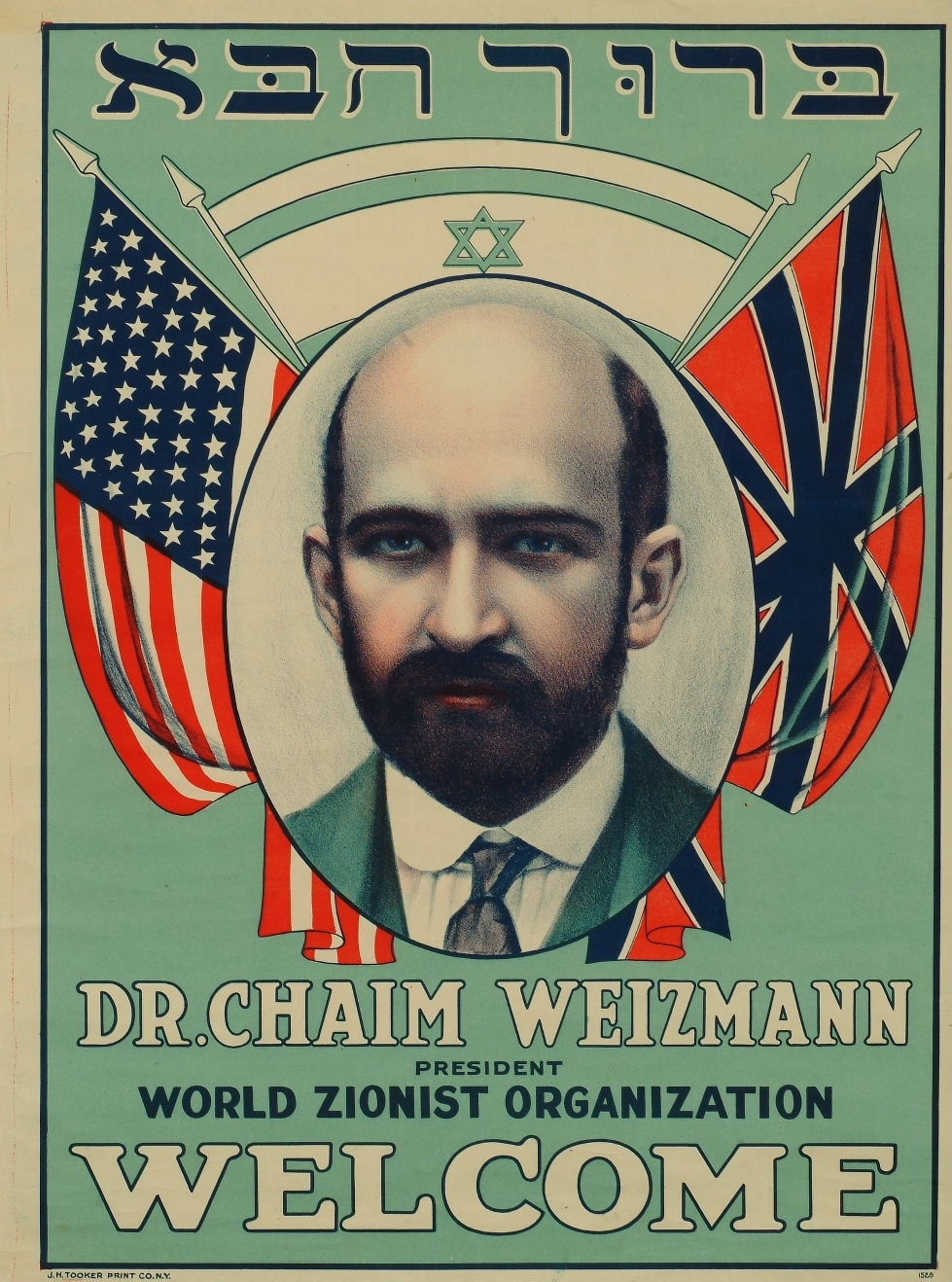 1921. There was strong opposition to the activities of Keren Hayesod in the US. The leaders of the Zionist organizations, headed by Supreme Court Justice Louis D. Brandeis, wanted full control over donations within the United States and strongly objected to handing them over to Keren Hayesod. Chaim Weizmann decided to embark on a mission to the United States in an effort to change this stance. His objective was to launch the Keren Hayesod Appeal in the US. On April 2, 1921, a delegation of Keren Hayesod and other Zionist leaders headed by Weizmann arrived at the Port of New York. Thousands of cheering Jews from throughout the US awaited them. Most of them had come from afar, and walked for hours to be present for the occasion. On April 17, 1921, Weizmann published an announcement, “To the Jews of America”, proclaiming the launch of an appeal, despite the opposition of the heads of the local organizations. For three months, Weizmann and his entourage went on an unprecedented fundraising tour. He traveled tirelessly from city to city, gave speeches, explained and raised funds. He asked the American public to follow in his footsteps and called upon the Jews to support the work in Eretz Israel. He vehemently urged them not to accept the capitalist approach of Brandeis, which encouraged private initiatives. Support for Weizmann grew with each passing day. The donations increased. On June 5, 1921, a fateful conference took place in Cleveland. There, to everyone’s surprise, Keren Hayesod won a decisive victory and its proposals were accepted by a majority of more than two thirds. Keren Hayesod America began operating at full steam and succeeded in raising $600,000 within two and a half months. By the middle of 1922, this amount had reached over $3 million. Later, however, it was decided to split fundraising in the Jewish world between the American UJA, which raised funds in the United States, and Keren Hayesod, which operated in the rest of the world.
1921. There was strong opposition to the activities of Keren Hayesod in the US. The leaders of the Zionist organizations, headed by Supreme Court Justice Louis D. Brandeis, wanted full control over donations within the United States and strongly objected to handing them over to Keren Hayesod. Chaim Weizmann decided to embark on a mission to the United States in an effort to change this stance. His objective was to launch the Keren Hayesod Appeal in the US. On April 2, 1921, a delegation of Keren Hayesod and other Zionist leaders headed by Weizmann arrived at the Port of New York. Thousands of cheering Jews from throughout the US awaited them. Most of them had come from afar, and walked for hours to be present for the occasion. On April 17, 1921, Weizmann published an announcement, “To the Jews of America”, proclaiming the launch of an appeal, despite the opposition of the heads of the local organizations. For three months, Weizmann and his entourage went on an unprecedented fundraising tour. He traveled tirelessly from city to city, gave speeches, explained and raised funds. He asked the American public to follow in his footsteps and called upon the Jews to support the work in Eretz Israel. He vehemently urged them not to accept the capitalist approach of Brandeis, which encouraged private initiatives. Support for Weizmann grew with each passing day. The donations increased. On June 5, 1921, a fateful conference took place in Cleveland. There, to everyone’s surprise, Keren Hayesod won a decisive victory and its proposals were accepted by a majority of more than two thirds. Keren Hayesod America began operating at full steam and succeeded in raising $600,000 within two and a half months. By the middle of 1922, this amount had reached over $3 million. Later, however, it was decided to split fundraising in the Jewish world between the American UJA, which raised funds in the United States, and Keren Hayesod, which operated in the rest of the world.